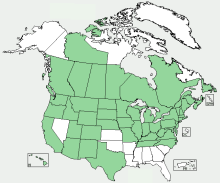Woodland Strawberry
Botanical name: Fragaria vesca
Family: Rose (Rosaceae)
Collectability: good
Main benefit
 blood building, rheumatic conditions, contains ellagic acid
blood building, rheumatic conditions, contains ellagic acid
Use - overview








Features and Identification
Habitat
Type: shady grassy places, open woods
Distribution: throughout northern hemisphere
Prefers: lime
General
Growth type: herb
Cycle: perennial
Height: up to 25 cm
 Leaf
Leaf
Shape: trefoil
Texture: shiny top, downy below
Edge: toothed
 Stem
Stem
Texture: silky hairs
Other: creeping, often producing new rooted plant where stem touches ground
 Flower
Flower
Diameter: 15mm
Petals/sepals: 5, pointed, close together
Arrangement: solitary
When: April to July
Colour:
 Fruit
Fruit
Shape: heart
Colour: red
 Seed
Seed
Size: tiny
Casing: fruit
Other: the seeds sit in dimples on the surface of the fruit
Type: shady grassy places, open woods
Distribution: throughout northern hemisphere
Prefers: lime
General
Growth type: herb
Cycle: perennial
Height: up to 25 cm
 Leaf
LeafShape: trefoil
Texture: shiny top, downy below
Edge: toothed
 Stem
StemTexture: silky hairs
Other: creeping, often producing new rooted plant where stem touches ground
 Flower
FlowerDiameter: 15mm
Petals/sepals: 5, pointed, close together
Arrangement: solitary
When: April to July
Colour:

 Fruit
FruitShape: heart
Colour: red
 Seed
SeedSize: tiny
Casing: fruit
Other: the seeds sit in dimples on the surface of the fruit
Distribution Map

When Available?
 February to August - best May and June
February to August - best May and June all year - best September to November
all year - best September to November June to September
June to September
Culinary Use
Flavour
Rating and Description:

 sweet-sour, like cultivated, but stronger flavour
sweet-sour, like cultivated, but stronger flavour
How to Consume
 young: raw, tea
young: raw, tea
 roasted (coffee substitute)
roasted (coffee substitute)
 raw
raw
Nutrition
 iron, potassium, ellagic acid
iron, potassium, ellagic acid
Used as ...


 food
food
Rating and Description:

 sweet-sour, like cultivated, but stronger flavour
sweet-sour, like cultivated, but stronger flavourHow to Consume
 young: raw, tea
young: raw, tea roasted (coffee substitute)
roasted (coffee substitute) raw
rawNutrition
 iron, potassium, ellagic acid
iron, potassium, ellagic acidUsed as ...


 food
food
Medicinal Use
Action:
 astringent, depurative, diuretic, laxative, tonic
astringent, depurative, diuretic, laxative, tonic
 astringent, diuretic
astringent, diuretic
May treat:
 diarrhoea; external: sunburn, chilblains; powdered in oil: open sores
diarrhoea; external: sunburn, chilblains; powdered in oil: open sores
 (contains salicylic acid) rheumatism, gout, liver and kidney complaints
(contains salicylic acid) rheumatism, gout, liver and kidney complaints
 diarrhoea, chronic dysentery; external: chillblains
diarrhoea, chronic dysentery; external: chillblains
 astringent, depurative, diuretic, laxative, tonic
astringent, depurative, diuretic, laxative, tonic astringent, diuretic
astringent, diuretic May treat:
 diarrhoea; external: sunburn, chilblains; powdered in oil: open sores
diarrhoea; external: sunburn, chilblains; powdered in oil: open sores (contains salicylic acid) rheumatism, gout, liver and kidney complaints
(contains salicylic acid) rheumatism, gout, liver and kidney complaints diarrhoea, chronic dysentery; external: chillblains
diarrhoea, chronic dysentery; external: chillblains
Collection, Storing and Notes
Collection
May be mistaken for Barren Strawberry, Potentilla sterilise, a non-fruiting cousin. See image page to compare.
 hidden below leaves
hidden below leaves
Drying

 dry to store
dry to store
Note
 more active dried; infusion: 25g to 1/2 litre.
more active dried; infusion: 25g to 1/2 litre.
Food for the Grizzled Skipper caterpillar.
May be mistaken for Barren Strawberry, Potentilla sterilise, a non-fruiting cousin. See image page to compare.
 hidden below leaves
hidden below leavesDrying

 dry to store
dry to storeNote
 more active dried; infusion: 25g to 1/2 litre.
more active dried; infusion: 25g to 1/2 litre.Food for the Grizzled Skipper caterpillar.
Key
Plant parts:
 leaf
leaf
 stem or trunk
stem or trunk
 sap
sap
 root, bulb, tuber and other below ground parts
root, bulb, tuber and other below ground parts
 flower
flower
 fruit
fruit
 seed
seed
Use:
 culinary use
culinary use
 medicinal use
medicinal use
 household use
household use
Other:
 caution
caution
 leaf
leaf stem or trunk
stem or trunk sap
sap root, bulb, tuber and other below ground parts
root, bulb, tuber and other below ground parts flower
flower fruit
fruit seed
seedUse:
 culinary use
culinary use medicinal use
medicinal use household use
household useOther:
 caution
caution
Glossary
General Glossary
Glossary of Medicinal Terms and Nutritive Substances
- trefoil: leaf with three leaflet or lobes
Glossary of Medicinal Terms and Nutritive Substances
- astringent: causes localised contraction of blood vessels and tissue, reducing the flow of blood, mucus, diarrhoea etc.
- depurative: eliminates toxins and purifies the system, especially the blood
- diuretic: increases secretion and elimination of urine
- ellagic acid: an antioxidant which may be beneficial against cancer, heart disease and other medical problems
- laxative: evacuates the bowels or softens stools
- tonic: improves general health, bringing steady improvement




